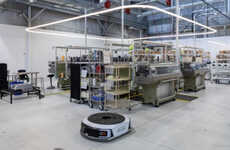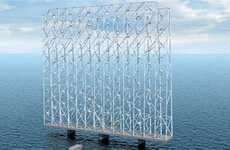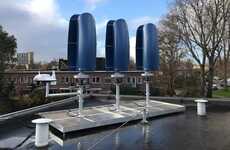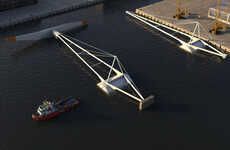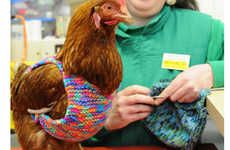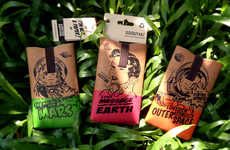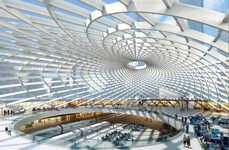
The Wind Powered Factory Turns Clean Energy into Clothing
References: swiss-miss & thisiscolossal
The Wind Knitting Factory by Merel Karhof’s is a dramatic example of how approaching even the most traditional of tasks in new and exciting ways can yield terrific results.
The Wind Factory relies exclusively on (as you might have gathered from its name) wind power to fuel its indoor scarf-producing machines. What is really impressive about the Wind Factory, however, is that each scarf comes with a tag affixed to it, which shows when it was knitted and how long the process took.
Although designed only to be a low-scale social project, the Wind Factory is nevertheless a success in that it demonstrates, without obfuscation, a practical application of wind energy technology that has objectively verifiable results and a tangible end product.
The Wind Factory relies exclusively on (as you might have gathered from its name) wind power to fuel its indoor scarf-producing machines. What is really impressive about the Wind Factory, however, is that each scarf comes with a tag affixed to it, which shows when it was knitted and how long the process took.
Although designed only to be a low-scale social project, the Wind Factory is nevertheless a success in that it demonstrates, without obfuscation, a practical application of wind energy technology that has objectively verifiable results and a tangible end product.
Trend Themes
1. Wind Power - The use of wind power to fuel manufacturing processes presents disruptive innovation opportunities for clean energy adoption and sustainable production.
2. Indoor Manufacturing - The concept of indoor manufacturing facilities powered by renewable energy sources introduces disruptive innovation opportunities for localized and environmentally friendly production.
3. Transparent Production - The integration of transparent production processes, such as tagging products with production details, offers disruptive innovation opportunities for increased consumer trust and sustainability awareness.
Industry Implications
1. Renewable Energy - The renewable energy industry can capitalize on wind power as a disruptive innovation that transforms traditional manufacturing processes into sustainable operations.
2. Textile Manufacturing - The textile manufacturing industry can explore wind-powered facilities as a disruptive innovation to enhance sustainability and differentiate their products in the market.
3. Consumer Goods - The consumer goods industry can leverage transparent production practices, like tagging products with production details, as a disruptive innovation that fosters sustainability-conscious consumer choices.
4
Score
Popularity
Activity
Freshness


